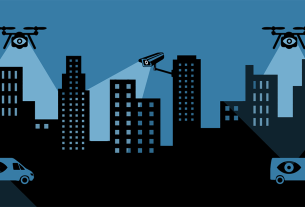President Trump’s attack on public broadcasting has attracted plenty of deserved attention, but there’s a far more technical, far more insidious policy change in the offing—one that will take away Americans’ right to unencumbered access to our publicly owned airwaves.
The FCC is quietly contemplating a fundamental restructuring of all broadcasting in the United States, via a new DRM-based standard for digital television equipment, enforced by a private “security authority” with control over licensing, encryption, and compliance. This move is confusingly called the “ATSC Transition” (ATSC is the digital TV standard the US switched to in 2009 – the “transition” here is to ATSC 3.0, a new version with built-in DRM).
The “ATSC Transition” is championed by the National Association of Broadcasters, who want to effectively privatize the public airwaves, allowing broadcasters to encrypt over-the-air programming, meaning that you will only be able to receive those encrypted shows if you buy a new TV with built-in DRM keys. It’s a tax on American TV viewers, forcing you to buy a new TV so you can continue to access a public resource you already own.
This may not strike you as a big deal. Lots of us have given up on broadcast and get all our TV over the internet. But millions of American still rely heavily or exclusively on broadcast television for everything from news to education to simple entertainment. Many of these viewers live in rural or tribal areas, and/or are low-income households who can least afford to “upgrade.” Historically, these viewers have been able to rely on access to broadcast because, by law, broadcasters get extremely valuable spectrum licenses in exchange for making their programming available for free to anyone within range of their broadcast antennas.
If broadcasters have cool new features the public will enjoy, they don’t need to force us to adopt them
Adding DRM to over-the-air broadcasts upends this system. The “ATSC Transition” is a really a transition from the century-old system of universally accessible programming to a privately controlled web of proprietary technological restrictions. It’s a transition from a system where anyone can come up with innovative new TV hardware to one where a centralized, unaccountable private authority gets a veto right over new devices.
DRM licensing schemes like this are innovation killers. Prime example: DVDs and DVD players, which have been subject to a similar central authority, and haven’t gotten a single new feature since the DVD player was introduced in 1995.
DRM is also incompatible with fundamental limits on copyright, like fair use. Those limits let you do things like record a daytime baseball game and then watch it after dinner, skipping the ads. Broadcasters would like to prevent that and DRM helps them do it. Keep in mind that bypassing or breaking a DRM system’s digital keys—even for lawful purposes like time-shifting, ad-skipping, security research, and so on—risks penalties under Section 1201 of the Digital Millennium Copyright Act. That is, unless you have the time and resources to beg the Copyright Office for an exemption (and, if the exemption is granted, to renew your plea every three years).
Broadcasters say they need this change to offer viewers new interactive features that will serve the public interest. But if broadcasters have cool new features the public will enjoy, they don’t need to force us to adopt them. The most reliable indicator that a new feature is cool and desirable is that people voluntarily install it. If the only way to get someone to use a new feature is to lock up the keys so they can’t turn it off, that’s a clear sign that the feature is not in the public interest.
That’s why EFF joined Public Knowledge, Consumer Reports and others in urging the FCC to reject this terrible, horrible, no good, very bad idea and keep our airwaves free for all of us. We hope the agency listens, and puts the interests of millions of Americans above the private interests of a few powerful media cartels.


